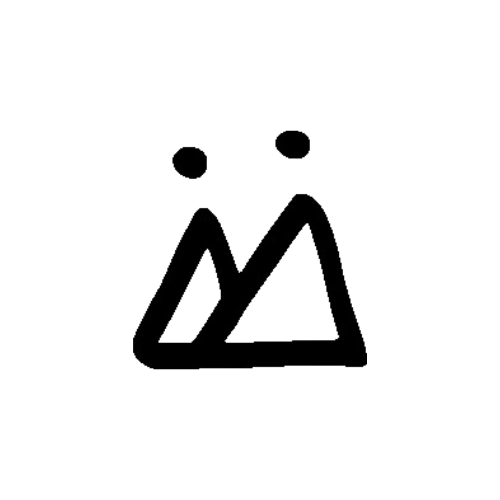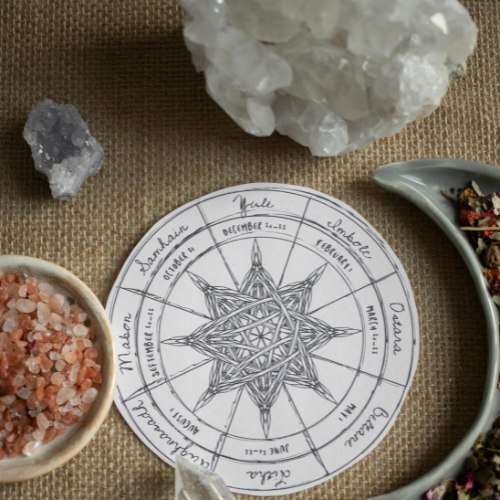The Spring Equinox is the point in the year when day and night are nearly equal in length.
This occurs because the sun crosses the celestial equator, marking the transition from winter to spring in the Northern Hemisphere and from summer to autumn in the Southern Hemisphere.
It symbolizes renewal, balance, and new beginnings.
The Spring Equinox typically falls around March 19–21 each year.
In 2025, it occurred on March 20, and we celebrated and honoured this at Yoga Borne with an in studio Sacred Seasons Workshop, on Saturday 22nd March.
A stretchy and sumptuous Yin Yoga practice, twisting it out with a Hatha / Slow Flow practice and ending the day with getting our creative juices flowing, painting our own plant pots to plant our seeds of intention.
Intertwined into all Sacred Season workshops is seasonal living knowledge, hints and tips, Traditional Chinese Medicine and Earth Based Wisdom from Studio Owner Karine, who studies, lives and teaches these ways for wellbeing.
What Is Ostara?
Spring Equinox is sometimes called Ostara.
Ostara is a Pagan and Wiccan festival that celebrates the Spring Equinox. It is one of the eight sabbats in the Wheel of the Year and honors the balance of light and dark before the days grow longer.
The holiday is named after Eostre, a Germanic goddess of dawn and fertility, and is associated with themes of rebirth, fertility, and growth. Many Easter traditions, such as eggs and rabbits, have roots in Ostara celebrations.
Celebrating Spring Equinox
Spring Equinox is celebrated in many ways across different cultures:
Modern Pagans & Wiccans: Ostara rituals, nature walks, planting seeds, lighting candles, and decorating eggs.
Persian Nowruz: The Persian New Year, marked by fire festivals, feasting, and family gatherings.
Christian Easter: Many Easter symbols, like eggs and hares, have Pagan origins linked to Ostara.
Spiritual Meaning of Spring Equinox
Balance & Harmony: Equal light and darkness symbolize inner balance.
Renewal & Growth: Represents fresh starts, fertility, and personal growth.
Transformation: A time to set new intentions and embrace change.
Connection to Nature: Encourages mindfulness and connection with the Earth’s cycles.
Rituals for Ostara
Egg Decorating: Symbolizing fertility, rebirth, and new beginnings.
Planting Seeds: A literal and spiritual act of growth, intentions and manifestation.
Spring Altar: Decorate with flowers, green and yellow candles, and symbols of rebirth (like eggs and rabbits).
Sunrise Meditation: Welcome the light and set intentions for the season.
Balance Rituals: Reflect on personal balance through journaling or meditation.
Feasting: Fresh foods like greens, honey, eggs, and dairy honour the season.
Nature Walks: Observe the changes in the land and connect with the Earth.
Fables & Tales of Spring Equinox / Ostara
The Legend of Eostre’s Hare
The Goddess Eostre found a wounded bird and transformed it into a hare so it could survive the winter. In gratitude, the hare laid colorful eggs, which Eostre gave to children as gifts. This is one of the origins of the Easter Bunny.
The Sun and the Moon’s Balance
A tale of the Sun and the Moon meeting in perfect harmony during the Equinox, representing balance in nature and life.
The Earth Awakens
A story about how Mother Earth awakens from her winter slumber, stretching her arms as flowers bloom and animals return.
Once Upon a Time…
In the heart of the winter, the Earth lay silent and still.
The trees stood bare, the rivers slowed, and the animals slept beneath blankets of snow.
Deep beneath the frozen soil, the Goddess of Spring, Eostre, slumbered in her crystal cave.
As the days grew longer, a small hare named Bran ventured through the barren land.
He had heard the whispers of the wind calling for Eostre to awaken, but none dared enter her sacred cave.
Determined, Bran made his way through the icy forest and arrived at the entrance of the crystal cavern.
Inside, the Goddess lay beneath a veil of frost.
Bran, filled with devotion, nudged her gently with his nose and placed a single wildflower beside her.
A golden warmth spread through the cave as Eostre’s eyes fluttered open. #
She smiled and ran her fingers through the Earth, causing the ice to melt and the first green shoots to emerge.
As she stepped into the world, the rivers began to flow, the trees sprouted leaves, and flowers bloomed in her wake.
She looked down at Bran, the little hare who had awakened her, and gifted him with the power to lay eggs once a year-eggs filled with the colors of spring.
Ever since, the hare and the egg have been symbols of Ostara, reminding the world of the balance of light and dark, the promise of renewal, and the magic of new beginnings.
Our next Sacred Seasons Workshop will honour Beltane, the midway point between Spring Equinox and Summer Solstice.
Join us for a beautiful workshop experience on Saturday 3rd May 2025.
An afternoon of Yoga, mindfulness, meditation, relaxation and creating your own flower crown.
More details and bookings, just click here.
Wishing you a Spring season of health, wealth and happiness!












































